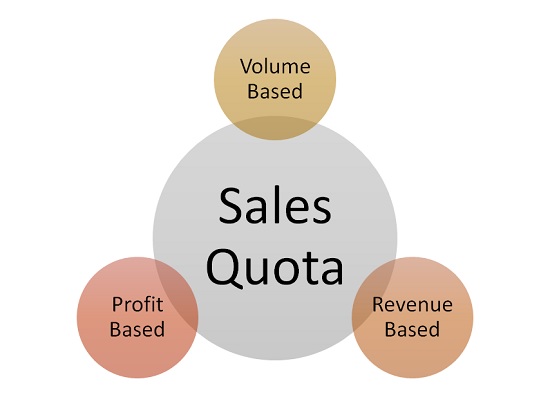Every journey needs a destination – and every business needs a sales target.
It is only when this target is achieved that your business can start to see the first glance of success.
A sales quota is a defined destination that your business needs. Usually, it’s a time-sensitive goal reached on a monthly, quarterly, or annual basis.
But what is the purpose of setting a sales quota?
What are the types of sales quotas that you should target, and how should you plan them?
Read on to find out more about sales quotas!
A. What is a sales quota?
Sales figures can be evaluated in many ways. These include total revenue, units sold, and new customers acquired.
A sales quota is a defined target. It represents a specific number that a salesperson or a team must achieve within a designated period, such as a month, quarter, or year.
A sales quota aims to inspire individuals or teams to meet their targets. This can lead to performance-based rewards.
B. Why is sales quota important?
We all know the importance of setting goals, right?
It gives the members of a company a target to shoot for.
It’s simple, really; when their eyes are set on a target, they won’t have to roam around in their endeavors. Instead, with a clear sales purpose in their mind, they can achieve better results.
Your team of salespersons always see that visible number that they are expected to attain.
When the quota is missed, it can lead to conflict and confusion in the channel. Meanwhile, the sales team feels discouraged and ends up perceiving the plan as unfair.
A well-planned sales quota should be tied to the company strategies.
A missed sales quota not only discourages a salesperson but also disrupts the sales cycle and company’s journey to achieve its targets.
That’s why, it’s essential to set sales quotas and build plans for the organization around such quotas.
C. Sales quota vs. sales goals
It is pretty obvious now that a sales quota is a kind of goal setting for the sales team.
But what is the difference between a sales quota and a sales target?
They sound pretty much the same, right? Well, not really.
You can say that the sales quota is a part of a set of actions planned to help achieve a goal.
Let’s assume Enthu.AI plans to increase the revenue of call center quality software by 100% in 2022.
The sales team leader will analyze and identify the number of sales that the team needs to close in the year to meet the revenue target of the company.
As part of the onboarding process, new sales team members will be introduced to these targets and trained on the strategies to achieve them.
This will eventually help to determine how many deals need to be closed in a quarter, and accordingly, the value of the deals to be closed by a salesperson will define individual sales quota.
Usually, this quota is directly tied to the incentives and commissions that the salesperson can earn.
Thus, by achieving these milestones, the overall goals of the company are met over a long duration.
Sales quotas are individual short-term targets that build up to those objectives.
D. 6 Types of sales quotas

Now that you have a fair idea of sales quotas and their importance, let’s try to understand their types.
Be it cold calling, cold emailing sending out marketing emails, or inviting people to join webinars, several activities are performed in the interest of achieving sales and come with quotas.
1. Sales Volume Quota
This sales quota is determined on the basis of the units sold and monetary incentives during a specified period. It can be broken down further to fit sales individuals, product range and line, branch offices, location, etc.
Example of Sales Volume Quota: The sales team’s quarterly quota can be set at 100,000 subscriptions at $5 each. A profit-based quota is set for the sales representatives in such a way that they have to earn a certain revenue for the company by selling products or services for a certain amount of money. Example of Profit Quota: You incentivize the sale of high-quality high-margin subscriptions for an individual rep who has to meet the quote of earning a profit of $10,000 in a quarter. For expense quota, you’ll have to assign a certain budget for a sales rep. This budget is a percentage of the targeted sales volume of the region, and the sales rep’s expenditure must be limited to this amount only. Example of Expense Quota: You allot each representative an expense quota of 5% of sales as a budget for traveling and other costs incurred. An activity-based sales quota is based on the sales-oriented actions that a salesperson needs to make during a particular time period. This can be anything from making calls, and sending emails to visiting clients and submitting documents. Example of Activity Quota: A sales rep on the team successfully meets his activity quota of making 20 sales calls a day. Some sales reps have to follow a combination of strategies as a roadmap to close sales. This includes small attainable milestones to achieve a larger objective. Example of Combination Quota: Your sales rep has to make 50 calls and 5 webinars to achieve a profit of $2000 in a month. So, he has a combination quota, including sales volume and activity. Forecast quota is based on the sales that a manager and his/her team in a certain territory are expected to achieve basis a forecast. The forecast is calculated on the basis of historical performance. Example of Forecast Quota: A music label made $7000 in 2021 which is , targeting the UK, and their new annual goal is a 25% rise in profit. All of these quotas can be set by adopting different methods of calculating the new goals. For this, historical sales and profits, original revenue goals of the company, cost of administration and gross margin, and the percentage achieved by the top-performing salesperson in his/her territory. Can you think of a manager who sets the bar so high that you can’t even see it? Yes, we all have faced at least one of those managers who believe that setting unattainable goals can push the team members to strive for something higher. Sadly, it does not always work that way. If your sales quota for the quarter is impossible to achieve, the team will eventually fall short. The plus side is that even if the goal is not achieved, your company will probably still have a good quarter. When the team sees that the numbers have not been achieved, it will deplete the morale of the reps. In your attempt to give them some big motivation, you might be setting the team up for failure. That’s why If sales reps do their best but still see that the target isn’t near, they feel overworked. It will kill their productivity. Once they realize that quotas are deliberately set to be unattainable, they’ll stop trying. Overworked sales reps often end up leaving such a toxic workforce. In that situation, you will need to start rehiring and training new employees all over again – ultimately hurting company resources. Some sales reps won’t leave the company, but they get overly competitive with their colleagues and might resort to dishonest ways to achieve their targets, creating an unhealthy work environment. Setting sales quotas is an excellent way to give sales representatives in a company a goal towards which they need to start working. It’s ideal for challenging the team members. But remember to set realistic goals and establish a reward system to encourage greater sales in a healthy way. 1. What is the sales quota? A sales quota is a target or goal set for a salesperson or sales team, outlining the amount of sales or revenue they are expected to achieve within a specific time period.2. Profit Quota
3. Expense Quota
4. Activity Quota
5. Combination Quota
6. Forecast Quota
E. What if the sales quota is nonattainable?

a) The plus side
b) Gets demotivating
c) Lowers productivity
d) Results in attrition
e) Unhealthy competition
Conclusion
FAQs



 On this page
On this page













